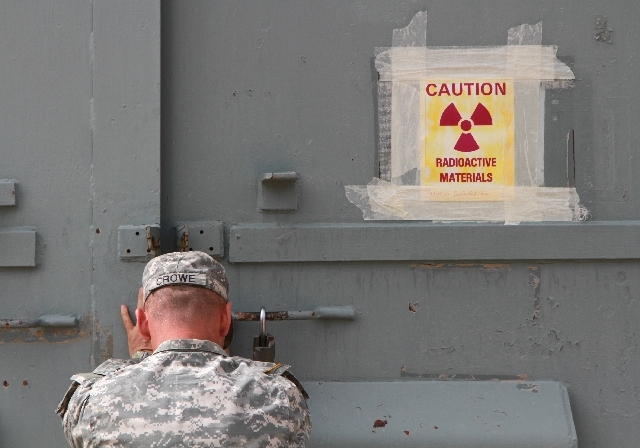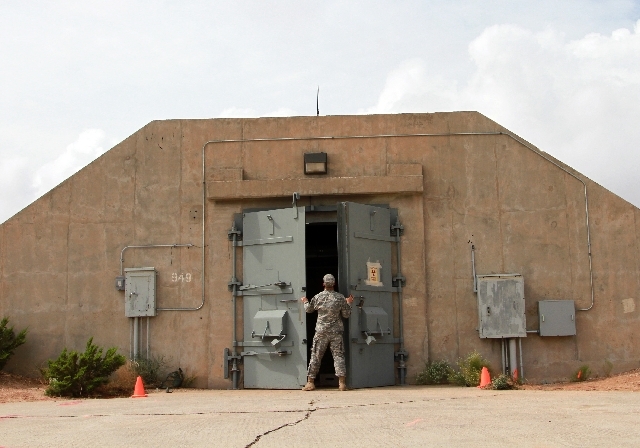Fort Bliss: Contaminated bunker not a threat




FORT BLISS, Texas — Fort Bliss officials downplayed the threat of radiation exposure Friday related to a contaminated bunker on the West Texas military post.
Leaders said additional testing shows the contamination is contained to the floor of one bunker at Biggs Army Airfield. Nuclear weapons were assembled and stored in the bunker in the 1950s and 1960s when the facility belonged to the Air Force.
Officials earlier this week announced that a tip from a retired airman about buried sealed containers with radioactive residues near the bunkers prompted an investigation, which revealed radioactivity in the bunker and called into question the safety of personnel. But they said Friday there was no risk to those who worked in the bunker during the Cold War-era or more recently.
“The radiation continues to be contained within the (epoxy) paint,” Maj. Joe Buccino said. The Air Force covered the floor of the bunker with epoxy paint, which at the time was standard procedure to contain this type of radiation, he said, but when the Army started using the building, the paint began to chip away and exposed the contaminants.
Buccino said the contamination in the bunker or the reported buried containers has not seeped into the ground water.
“The water is normal and safe,” adding that the equipment stored in the bunker since 2003 isn’t contaminated, he said.
Lt. Col. Jason Crowe, who was in charge of the equipment inside the bunker until the radiation was discovered, said he was “concerned,” but said that the airman who contacted authorities about two months ago about contaminated residue was in his 80s and apparently still healthy.
Learning that levels and spread of the radiation are lower than initially expected is good, Crowe said.
“It gives the contractors peace of mind,” he said.
Radiation levels in the area of the bunker are equal to those naturally occurring in the environment, Buccino said.
Between 2003 and a few days ago, when the contamination was discovered, the bunker was a repository for rifles and other weapons used for training by soldiers preparing for deployment.
Buccino also said testing conducted this week in the area of the bunker and of the water table below has minimized initial concerns about exposure to uranium.
Rags and other items used in assembling nuclear weapons were placed in containers decades ago and buried in proximity to the bunker, which is one of nine near the airfield.
Buccino said the focus for investigators in the coming months is to determine where containers are buried. He said they will rely on old documents and anecdotal evidence from workers at the time to pinpoint the locations.
As for searching for potentially contaminated buildings, Buccino said the base will only search specific facilities if alerted.
“We can’t go on a witch hunt,” he said. “We have a lot of area.”
Fort Bliss stretches across 1,700 square miles, more than any other military installation in the country.












